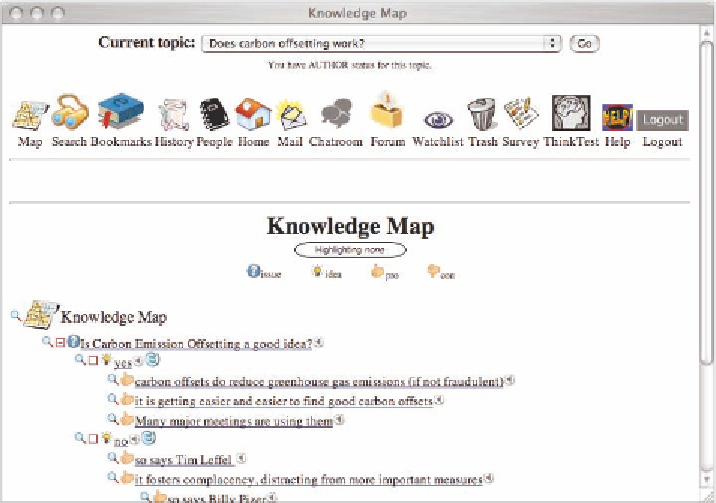Information Technology Reference
In-Depth Information
Figure 5. A snapshot of the Collaboratorium user interface.
•
mail, chatroom and forum: these tools al-
low users to communicate 1-to-1 (mail), in
a public synchronous context (chatroom), or
via a public asynchronous threaded discus-
sion (forum).
•
the help tool: this tool provides a set of
textual user guidelines (describing how to
participate in an argument-mapping com-
munity) as well as help videos (describing
how to use the user interface, including all
the tools listed here).
•
watchlist: this allows users to specify which
articles or comments they are interested in,
so they can be automatically notified (by
email) when any changes are made thereto.
When coupled with easy rollbacks, this helps
make the knowledge-base “self-healing”: if
an article is compromised in some way, this
can be detected and repaired rapidly.
See Klein (2007) for a more detailed discussion
of the design of the Deliberatorium.
the set up of the experiment
A first test of the deliberatorium was performed
in December of 2007 at the University of Naples
Federico II (Italy) with a community of 220 gradu-
ate students, which was asked to deliberate on the
topic “the future of biofuels”. The students were
all part of a same class from a graduate program
in Industrial Engineering, age 23-25, 55% male.
Students selected from that class helped to co-
ordinate and manage the experiment, and were
required as a result to deal with social pressures
from their fellow students and with the fact that
•
survey and thinktest: these allow users to
provide feedback on the system (survey)
as well as take an analytic reasoning test
derived from the widely-used Graduate
Management Admissions Test (GMAT).
The latter allows us to better understand
individual differences in successful use of
the argument map, as well as assess whether
argument map use improves critical reason-
ing skills.

Search WWH ::

Custom Search